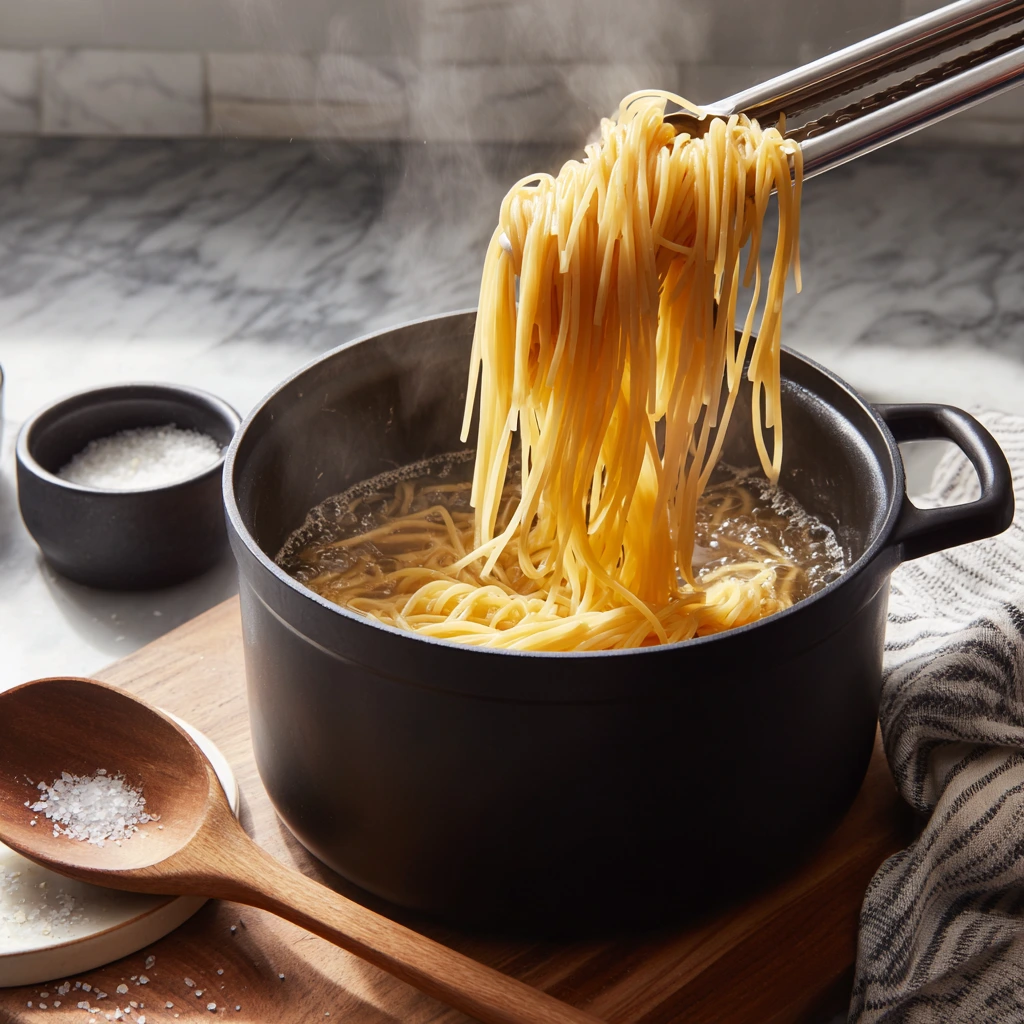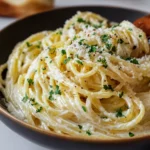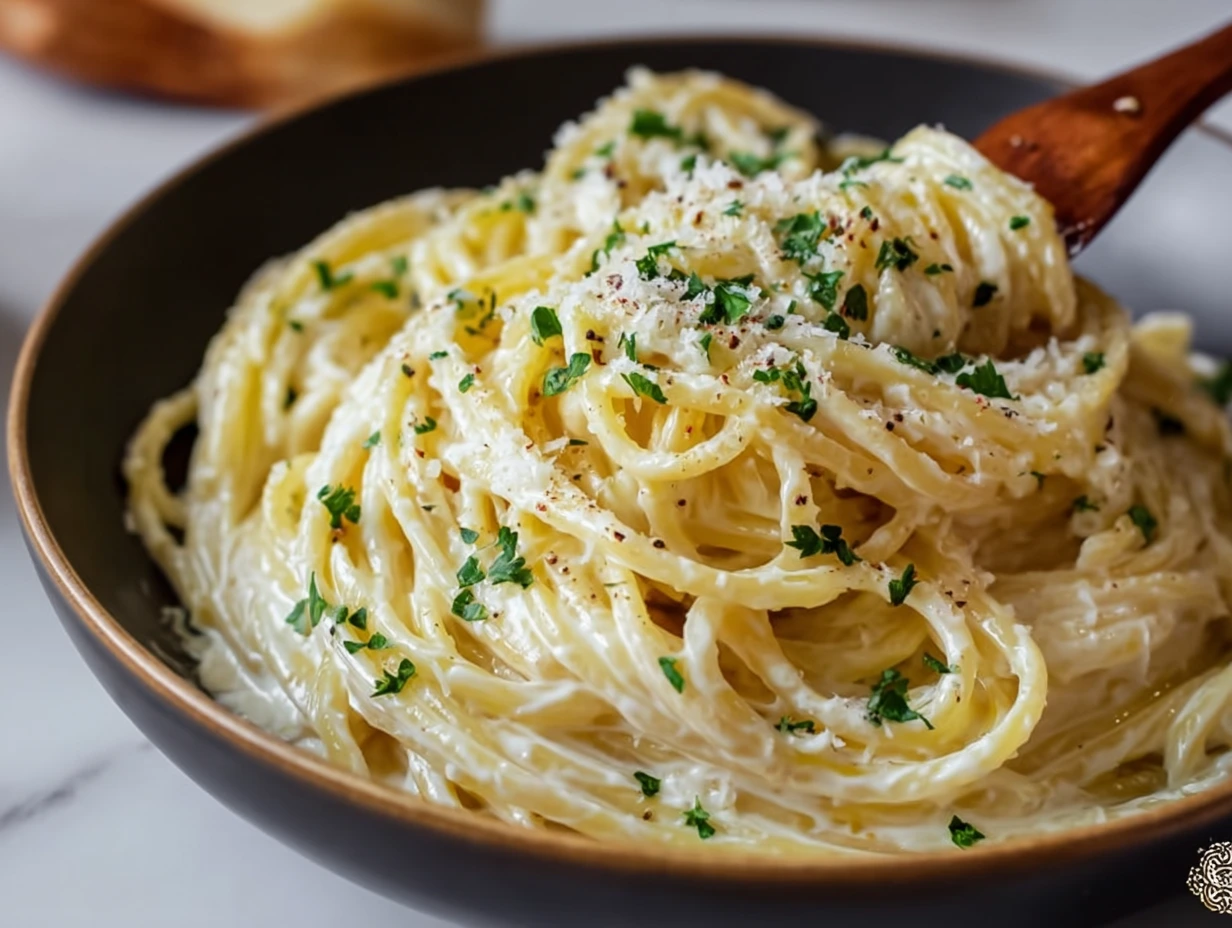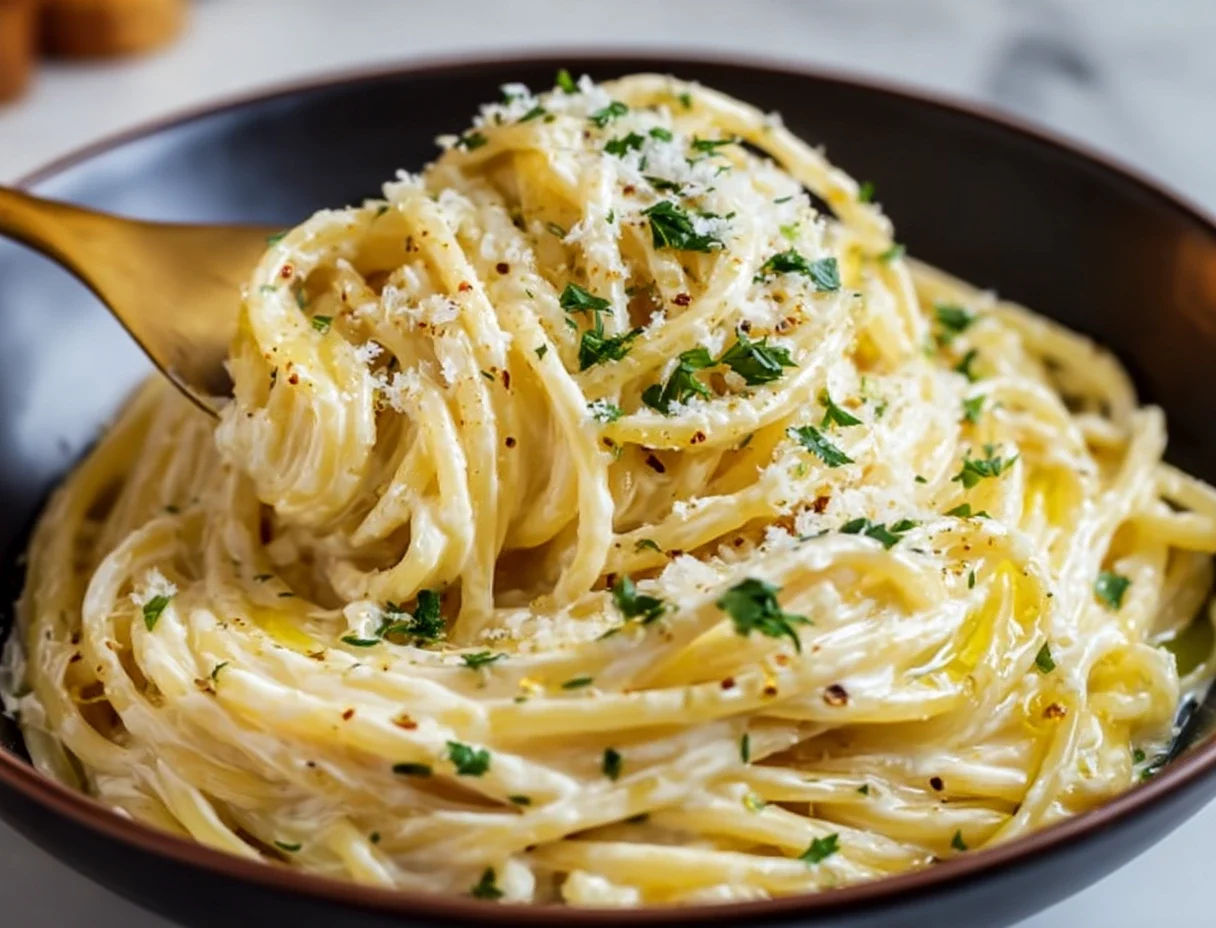I’ll never forget the first time I stumbled upon the magic of ricotta in a pasta sauce. It was a hectic Tuesday evening—one of those “what’s-for-dinner?” meltdowns when the fridge feels like it’s mocking you. All I had was a tub of ricotta, a lonely lemon, and some spaghetti. Fast-forward thirty minutes, and I was twirling strands of the creamiest, brightest pasta I’d ever tasted. That night I learned that simple ingredients, a pinch of confidence, and a few clever tricks can transform an ordinary weeknight meal into something you’ll want to share with friends.
This Lemon Ricotta Spaghetti strikes that perfect balance of indulgence and lightness. The creaminess of ricotta settles silky around each al dente strand, while fresh lemon zest and juice cut through with a bright vibrancy. A touch of garlic-infused olive oil brings warmth without weighing the dish down. It’s elegant enough for a casual dinner party but humble enough for a solo, no-fuss supper. Plus, it comes together in under half an hour—just enough time to set the table, pour a glass of white wine, and savor the anticipation.
Over the years, I’ve added little tweaks—sometimes swapping parsley for basil, occasionally stirring in a handful of toasted pine nuts for crunch—but the core of this recipe remains a testament to simplicity. Whether you’re a seasoned home cook or someone just starting to explore the wonderful world of homemade sauces, this pasta will make you feel like a kitchen rock star. Ready to dive in? Grab your apron, and let’s get started.
Ingredients You’ll Need
-
12 oz (340 g) spaghetti
-
1 cup (240 g) ricotta cheese
-
Zest and juice of 1 large lemon
-
¼ cup (25 g) grated Parmesan cheese, plus extra for serving
-
2 Tbsp olive oil
-
2 cloves garlic, minced
-
Salt and freshly ground black pepper, to taste
-
Fresh basil or parsley leaves, for garnish
Step 1 – Cook the Spaghetti
-
Bring a large pot of generously salted water to a rolling boil. I like mine tasting almost like the sea—this little trick seasons the pasta from the inside out.
-
Add the spaghetti and cook until just al dente, following the package directions. You want a slight bite—remember, it’ll finish cooking when we toss it later.
-
Before you drain, scoop out and reserve 1 cup of the starchy pasta water. It might look cloudy, but this liquid is pure gold when it comes to emulsifying our sauce.
-
Drain the noodles and give the pot a quick shake to rid them of excess water. No need to rinse—those little droplets help the sauce cling even better.

Step 2 – Whisk Together the Ricotta Sauce
-
While the pasta is bubbling away, grab a medium-sized bowl. Spoon in the ricotta cheese, then add the finely grated lemon zest and freshly squeezed lemon juice.
-
Sprinkle in the Parmesan, and whisk vigorously until the mixture is smooth and glossy. If your ricotta seems too stiff, add a tablespoon or two of that reserved pasta water to loosen it up—just enough to get a silky consistency.
-
Season lightly with salt (remember, Parmesan is already salty) and crack in plenty of black pepper. Taste and adjust: a little extra lemon juice can amp up the brightness if you like it zingy.
Step 3 – Infuse the Olive Oil
-
Heat 2 Tbsp of good-quality olive oil in a large skillet over medium heat. Once it shimmers, add the minced garlic.
-
Sauté for about 1 minute, just until fragrant—keep a close eye so it doesn’t turn golden brown, which can impart bitterness.
-
As soon as you smell that garlicky aroma, you know it’s time to bring in the pasta.
Step 4 – Toss Pasta in Garlic Oil
-
With the skillet off the heat, add the drained spaghetti directly into the garlic olive oil.
-
Using tongs or two wooden spoons, toss the pasta vigorously for 20–30 seconds. The goal is to coat every strand in that fragrant oil, ensuring no forkful goes unloved.
-
If the noodles start to stick, return the pan briefly to low heat and splash in a tablespoon of reserved pasta water—this helps loosen things up and jump-starts the emulsion process.
Step 5 – Incorporate the Ricotta Mixture
-
Remove the skillet from the heat completely (too much residual warmth can make your ricotta break).
-
Spoon dollops of the ricotta-lemon-Parmesan mixture over the pasta, then gently fold it in. Think of it like folding whipped cream into fruit—be thorough but gentle, so the sauce remains fluffy and doesn’t deflate.
-
Add reserved pasta water, one tablespoon at a time, tossing after each addition until the sauce clings in a creamy, ribbon-like coating. You may not need the full cup; stop once you’ve achieved a satiny finish.
Step 6 – Final Seasoning and Plating
-
Taste a forkful. Does it need a pinch more salt? A crack of fresh black pepper? Perhaps another squeeze of lemon juice for extra brightness? Adjust accordingly.
-
Divide the pasta among warm bowls or plates. Generously grate extra Parmesan over the top, then scatter fresh basil or parsley leaves. The pop of green makes it feel like spring in every bite.
-
Serve immediately—this dish is at its best when it’s hot and saucy.
Chef’s Tips & Variations
-
Pasta Shape Swaps: While spaghetti is classic, feel free to use bucatini, linguine, or even short shapes like penne. Just adjust tossing time so the sauce adheres evenly.
-
Herb Boost: For an herby twist, stir in a handful of finely chopped mint or tarragon alongside the basil. These bright herbs marry beautifully with lemon.
-
Nuts for Texture: Toasted pine nuts or slivered almonds add a delightful crunch. After you drain the pasta, sprinkle them into the skillet before adding ricotta.
-
Greens Galore: Wilt a couple of handfuls of baby spinach or arugula in the hot skillet before tossing in pasta for an easy veggie boost.
-
Protein Power: Stir in cooked shrimp, shredded rotisserie chicken, or crispy pancetta for a heartier meal—just heat through in the oil before adding pasta.
-
Make-Ahead Shortcut: Whisk the ricotta sauce up to a day in advance and refrigerate. Bring it to room temperature before using; you may need a splash of water to loosen if it’s very thick.
Frequently Asked Questions
1. Can I use low-fat or dairy-free ricotta?
Yes—low-fat ricotta will lighten the dish further, though the sauce may be slightly less rich. For dairy-free, choose a plant-based ricotta alternative and taste as you go, since some brands have added thickeners or flavorings. You may need an extra splash of pasta water to achieve that silky texture.
2. What’s the best way to store leftovers?
Transfer any cooled pasta into an airtight container and refrigerate for up to 2 days. The sauce may tighten as it chills; before serving, gently rewarm in a skillet with a tablespoon or two of water or broth to loosen it back to its original creaminess.
3. Can I prep parts of this recipe ahead of time?
Absolutely. You can whisk together the ricotta-lemon mixture and store it in the fridge for up to 24 hours—just bring it to room temperature and add a bit of reserved pasta water before tossing. Mince the garlic and zest the lemon ahead as well to streamline your cooking session.
4. How do I prevent the ricotta from curdling when mixed with hot pasta?
The key is to remove the skillet from direct heat before adding the ricotta mixture. Work quickly, folding gently, and introduce pasta water gradually. This mild temperature change and slow emulsification protect the cheese’s creamy structure.
5. My sauce seems thin—how do I thicken it?
If your sauce is too loose, let it rest for a couple of minutes off the heat; the pasta will continue to absorb moisture. You can also stir in an extra tablespoon of grated Parmesan, which acts as a natural thickener, or reduce the reserved pasta water you add.
6. Can I add vegetables or protein without diluting the flavor?
Yes. For vegetables, wilt greens (spinach, arugula) in the garlic oil before adding pasta, then continue as directed. For proteins like shrimp or chicken, cook them in the skillet first, remove them while you toss the pasta, and then fold them back in with the ricotta sauce—this keeps each element flavorful and distinct.
7. How do I adjust the lemon intensity?
Start with the juice and zest of one lemon for a bright but balanced zing. If you prefer it more citrus-forward, add an extra teaspoon of zest or an additional squeeze of juice at the very end. Always taste and tweak in small increments to avoid overpowering the creaminess.
Conclusion
There you have it—our full deep-dive into the quick, elegant world of Lemon Ricotta Spaghetti. From that first flicker of garlic in olive oil to the final sprinkle of fresh herbs, this recipe is all about celebrating simple ingredients at their best. Whether you stick to the classic version or riff on it with greens, nuts, or proteins, the result is a light yet comforting plate that feels special without demanding hours in the kitchen.
Give it a spin on your next busy weeknight or whip it up for a casual dinner party—you’ll find it’s the sort of dish that sparks compliments and conversation. If you try any of the variations, or discover your own genius twist, drop a comment below and let me know how it went. Happy cooking, and here’s to many more memorable meals made from the heart!
Print
Lemon Ricotta Spaghetti
- Total Time: 25 minutes
Description
This light yet indulgent pasta dish brings together creamy ricotta, bright lemon, and a hint of garlic for a refreshing meal that’s ready in under 30 minutes. Perfect for a quick weeknight dinner or an elegant lunch, it balances tangy citrus with rich cheese and al dente spaghetti.
Ingredients
- 12 oz (340 g) spaghetti
- 1 cup (240 g) ricotta cheese
- Zest and juice of 1 large lemon
- ¼ cup (25 g) grated Parmesan cheese, plus extra for serving
- 2 Tbsp olive oil
- 2 cloves garlic, minced
- Salt and freshly ground black pepper, to taste
- Fresh basil or parsley leaves, for garnish
Instructions
1️⃣ Cook the spaghetti: Bring a large pot of salted water to a boil. Add the spaghetti and cook until al dente according to package directions. Reserve 1 cup of pasta cooking water, then drain.
2️⃣ Prepare the ricotta sauce: While the pasta cooks, in a medium bowl whisk together ricotta, lemon zest, lemon juice, and Parmesan until smooth. Season lightly with salt and plenty of black pepper.
3️⃣ Flavor the oil: In a large skillet over medium heat, warm the olive oil. Add minced garlic and sauté for about 1 minute, just until fragrant—don’t let it brown.
4️⃣ Combine pasta and oil: Add the drained spaghetti to the skillet. Toss tirelessly so each strand gets coated in the garlic-infused oil.
5️⃣ Finish the sauce: Remove the skillet from heat. Spoon in the ricotta-lemon mixture and gently toss, adding reserved pasta water a little at a time until the sauce clings to the pasta in a silky coating.
6️⃣ Season and serve: Taste and adjust seasoning with more salt, pepper, or lemon juice if desired. Divide among plates, garnish with fresh basil or parsley, and sprinkle extra Parmesan on top. Serve immediately.
Notes
- Sauce consistency: If the sauce is too thick, stir in additional pasta water, one tablespoon at a time, until you reach your preferred creaminess.
- Herb variations: Swap parsley or basil for fresh mint or chives for a different flavor profile.
- Add-ins: For extra protein, stir in grilled shrimp or shredded rotisserie chicken. A pinch of red pepper flakes adds a pleasant heat.
- Prep Time: 10 minutes
- Cook Time: 15 minutes
Nutrition
- Serving Size: 4




